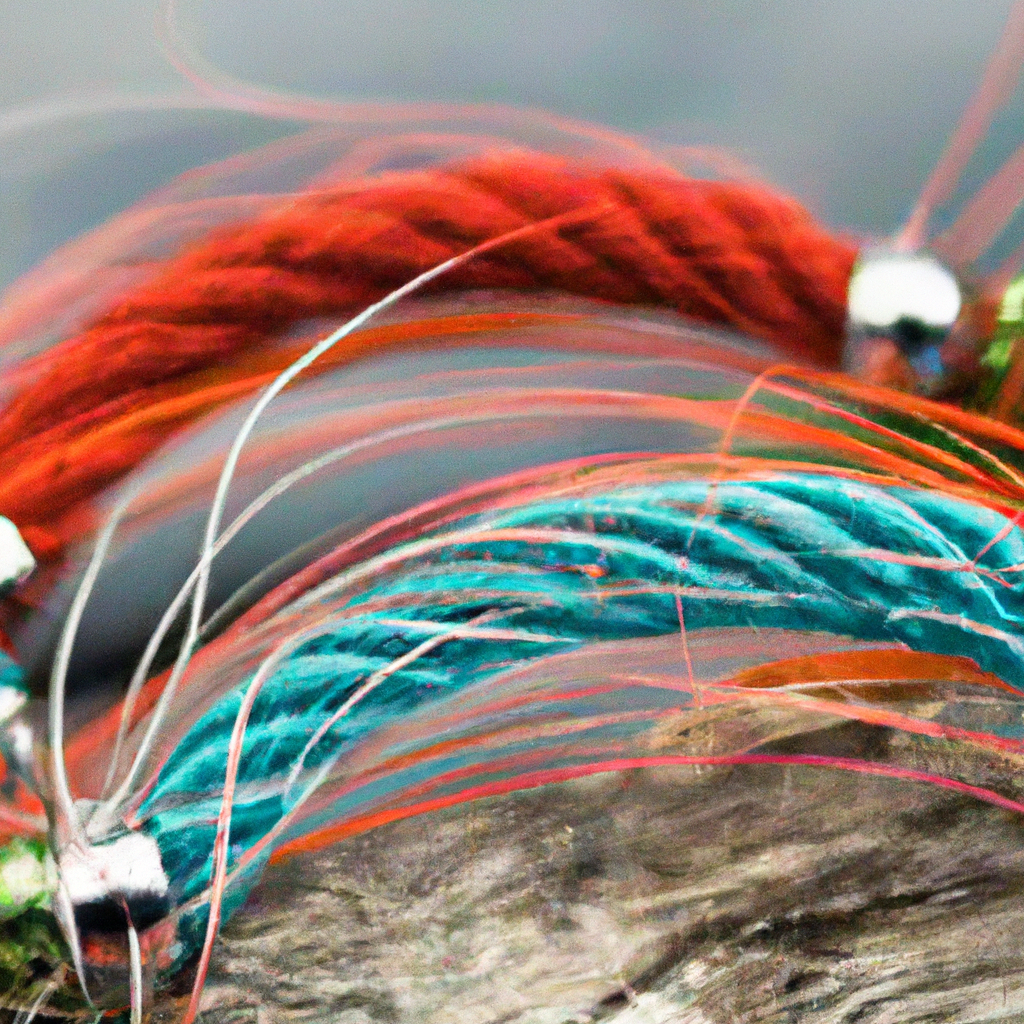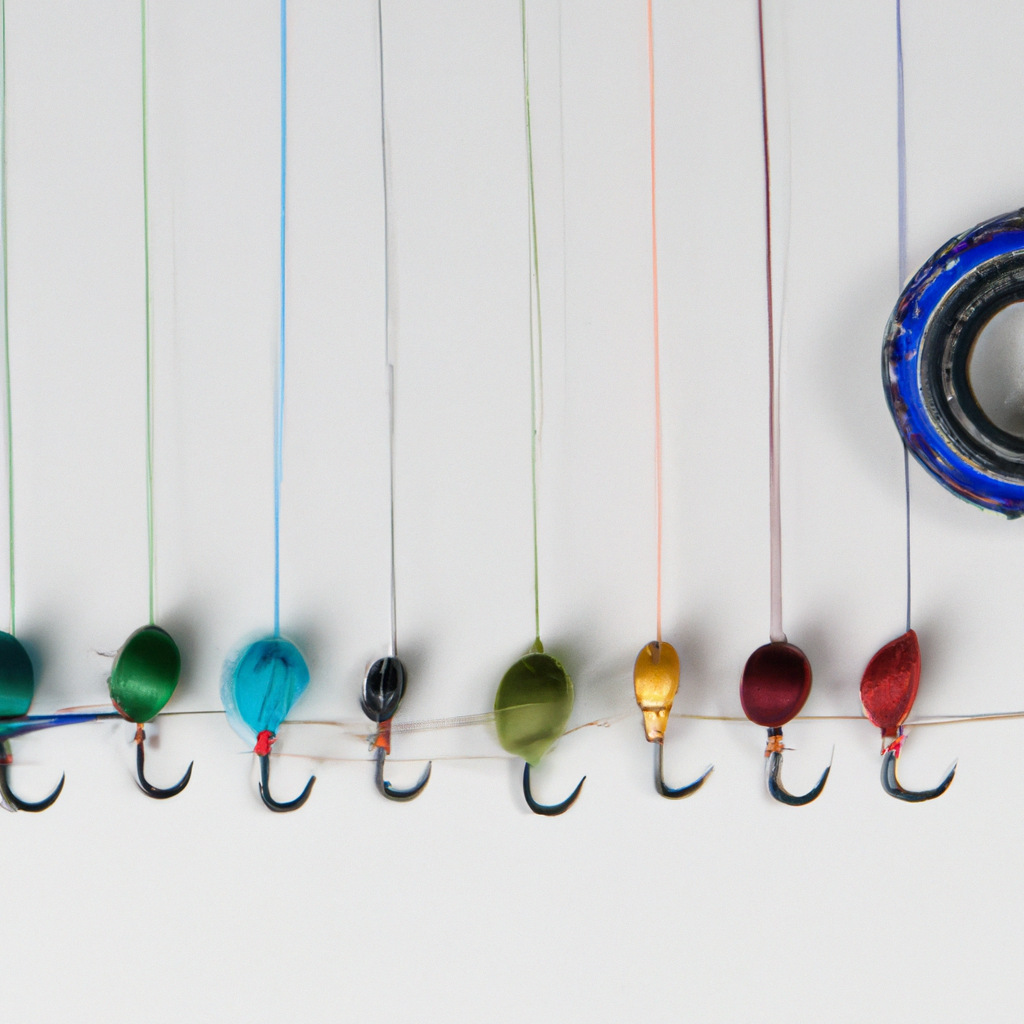
Have you ever wondered what exactly a shooting head fly line is? Well, in simple terms, a shooting head fly line is a type of fly line that is designed to allow for longer and more accurate casts. It consists of a thin running line and a thick, weighted head that is attached to the running line. The purpose of this design is to provide the angler with better control over the casting distance and presentation of the fly. So, if you’re looking to improve your fly fishing skills and achieve those long, precise casts, a shooting head fly line might just be the perfect addition to your gear.
What Is A Shooting Head Fly Line?
A shooting head fly line is a specialized type of fly line designed for long-distance casting. It consists of a thin, heavy weight-forward section called the shooting head, which is connected to a thinner running line. This unique design allows for effortless aerial casting and increased line speed, making it a favorite among anglers seeking to cast greater distances.
Definition of a shooting head fly line
A shooting head fly line is a type of fly line that is characterized by its design, which features a heavier section called the shooting head that is attached to a thinner running line. This design allows for increased casting distance, making it an excellent choice when targeting fish that are located further away. The shooting head fly line is commonly used in saltwater fishing, where long casts are often necessary to reach fish that are more skittish or located further from the angler.
Components of a shooting head fly line
A shooting head fly line is made up of several components that work together to create its unique design. The main components include:
-
Shooting Head: The shooting head is the heavier, weight-forward section of the fly line. It is responsible for carrying the momentum and transferring energy during the cast.
-
Running Line: The running line is the thinner section of the fly line that connects to the shooting head. It provides the angler with increased shooting distance and control during the cast.
-
Backing: Backing is a thin, strong line that is attached to the reel and provides extra line capacity. It acts as a reserve, ensuring that there is enough line to handle long runs and powerful fish.
-
Connection Loops: Connection loops are small loops located at the ends of the shooting head and running line. They allow for easy attachment and detachment of the different sections of the fly line, making it convenient for anglers to switch out shooting heads or running lines.

Advantages of using a shooting head fly line
There are several advantages to using a shooting head fly line:
-
Increased Casting Distance: The shooting head design allows for longer casts compared to traditional fly lines. This is particularly useful when fishing in situations where reaching fish at a distance is necessary.
-
Improved Line Speed: The shooting head’s heavier weight-forward design allows for greater line speed, making for more accurate and powerful casts.
-
Versatility: A shooting head fly line can be used in a variety of fishing situations, including saltwater, freshwater, and different angling techniques. This versatility makes it a popular choice among anglers who want a single line that can accommodate different fishing scenarios.
-
Customizability: Shooting head fly lines are often designed to be interchangeable, meaning anglers can switch out different shooting heads or running lines to suit their specific fishing needs. This allows for greater flexibility and adaptability on the water.
Different types of shooting head fly lines
There are different types of shooting head fly lines available, each with its own specific characteristics and intended use. Some of the most common types include:
-
Floating Shooting Head: As the name suggests, a floating shooting head remains on the water’s surface, making it ideal for topwater fishing or when targeting fish that are actively feeding near the surface.
-
Intermediate Shooting Head: An intermediate shooting head sinks slowly, typically at a rate of one to two inches per second. This type of shooting head is useful when you need to fish at a specific depth, such as when targeting fish that are slightly below the water’s surface.
-
Sink-Tip Shooting Head: A sink-tip shooting head features a sinking tip section attached to a floating shooting head. This design allows for versatile fishing, as the angler can control the depth at which the fly swims by varying the length of the sink-tip section.
-
Full-Sinking Shooting Head: A full-sinking shooting head sinks completely below the water’s surface. This type of shooting head is commonly used when fishing deep or in fast-moving water, as it allows the fly to reach the desired depth quickly.

Choosing the right shooting head fly line
When choosing a shooting head fly line, several factors should be considered to ensure the best match for your specific fishing needs. These factors include:
-
Target Species: Consider the type of fish you will be targeting. Different species may require different types of shooting head fly lines to effectively reach them and present the fly.
-
Fishing Environment: Take into account the fishing environment you will be in, such as saltwater, freshwater, or different types of water conditions. Different shooting head fly lines are designed to perform better in specific environments.
-
Casting Distance: Determine the casting distance you need to achieve. If you plan to fish in larger bodies of water or target fish that are further away, a shooting head fly line designed for longer casts would be a suitable choice.
-
Skill Level: Consider your skill level as an angler. Some shooting head fly lines may require more experience and skill to handle effectively, while others are more forgiving and suitable for beginner anglers.
Understanding shooting head line weights
Shooting head fly lines are available in various line weights, denoted by numbers ranging from 1 to 15. The line weight refers to the weight of the first 30 feet of the shooting head. Heavier line weights are designed for larger and more powerful fish, while lighter line weights are suitable for smaller species or finesse fishing.
It is important to match the line weight to the rod weight for optimal performance. The line weight and rod weight should be balanced to ensure proper load and casting ability. Consult the manufacturer’s recommendations or seek advice from experienced anglers or fly shops to select the appropriate line weight for your rod.
Preparing and setting up a shooting head fly line
Setting up a shooting head fly line involves several steps to ensure proper performance and functionality. Here are the basic steps to prepare and set up your shooting head fly line:
-
Attach Backing: Begin by attaching the backing to the reel. Make sure to tie a secure knot, such as the arbor knot, to prevent any slippage.
-
Connect the Running Line: Take the running line and connect it to the backing using a loop-to-loop connection. This connection allows for easy attachment and detachment of the running line.
-
Attach the Shooting Head: Once the running line is securely connected to the backing, attach the shooting head to the running line using a loop-to-loop connection. Ensure the connection is tight and secure.
-
Test the Setup: Prior to heading out on the water, test the shooting head fly line setup by making a few practice casts. This will allow you to check for any tangles or issues that need to be addressed before fishing.
Casting techniques with a shooting head fly line
Casting with a shooting head fly line requires some adjustment compared to casting with a traditional weight-forward fly line. Here are a few casting techniques to consider:
-
False Casting: Utilize false casting to generate line speed and shoot the line further. False casting involves making repeated forward and backward casts without allowing the line to touch the water. This technique helps load the rod and build energy for a more powerful cast.
-
Hauling: Hauling is a technique used to increase line speed and distance by adding additional power to the cast. It involves using the non-casting hand to pull on the line during the cast, resulting in a more powerful forward stroke.
-
Timing and Rhythm: Practice good timing and rhythm while casting. A smooth and controlled casting stroke will maximize the shooting head’s performance and allow for optimal distance and accuracy.
-
Double Haul: The double haul is a casting technique that involves a haul on both the backcast and the forward cast. It is an advanced technique that adds even more power and line speed to the cast, allowing for longer and more accurate casts.
Tips for fishing with a shooting head fly line
Here are some tips to enhance your fishing experience with a shooting head fly line:
-
Practice Casting: Spend time practicing your casting skills before heading out to fish. Familiarize yourself with the shooting head fly line’s unique casting dynamics to achieve optimal distance and accuracy.
-
Adjust Leader Length: Experiment with different leader lengths to achieve the desired presentation. A shorter leader may be necessary for heavy sinking shooting heads, while longer leaders are often used with floating or intermediate shooting heads.
-
Vary Retrieval Speed: Experiment with different retrieval speeds to determine what attracts the fish most effectively. Different species have different preferences, so adjusting the retrieval speed can help entice more strikes.
-
Maintain a Taut Line: Keep a taut line when fishing with a shooting head fly line. This will help you feel subtle strikes and ensure a more immediate hook set.
Maintenance and care of a shooting head fly line
Proper maintenance and care of a shooting head fly line will extend its lifespan and ensure optimal performance. Here are some tips for maintaining your shooting head fly line:
-
Clean Regularly: Clean your shooting head fly line regularly to remove dirt, debris, and saltwater residue. Use a mild soap or line cleaning solution and a soft cloth to wipe down the line, removing any buildup that may affect its performance.
-
Avoid Sun Exposure: Limit prolonged exposure to direct sunlight, as it can degrade the shooting head fly line’s coating. When not in use, store the line in a cool, dark place to protect it from UV damage.
-
Inspect for Damage: Regularly inspect your shooting head fly line for any signs of damage, such as cracks, cuts, or fraying. Replace the line if any significant damage is detected to avoid failure during use.
-
Proper Storage: When not in use, store your shooting head fly line loosely on a reel or line spool to prevent tangling or coiling. Avoid sharp bends or kinks, as they can weaken the line.
In conclusion, a shooting head fly line is a specialized type of fly line designed to enhance casting distance and line speed. It features a weight-forward shooting head connected to a thinner running line, allowing for effortless long-distance casting. By understanding the components, advantages, and various types of shooting head fly lines, you can select the right one for your specific fishing needs. With proper preparation, casting techniques, and maintenance, a shooting head fly line can greatly enhance your fishing experience and increase your chances of success on the water.